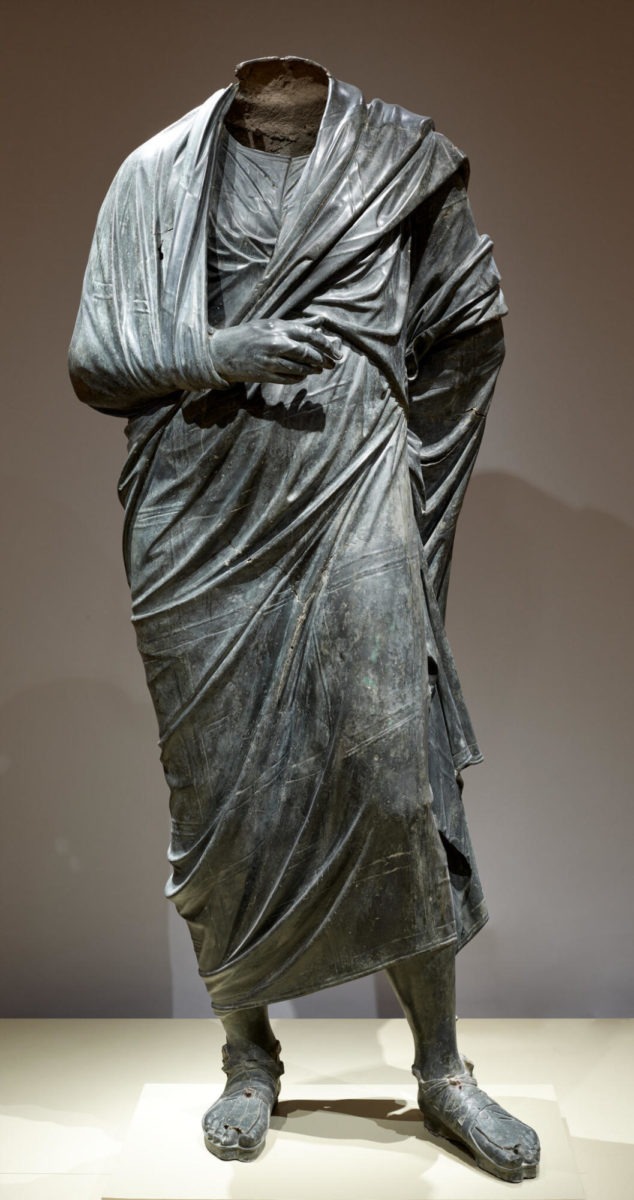The office of Manhattan District Attorney Alvin Bragg announced on Feb. 14 that the Cleveland Museum of Art (CMA) agreed to surrender a statue thought to depict Marcus Aurelius so that it could be repatriated to Turkey. This development ends a multi-year investigation by the New York Antiquities Trafficking Unit (ATU) that included the removal of the statue from the CMA in August 2023.
The headless bronze 6-foot-4-inch statue was looted along with many other artifacts in the 1960s in Bubon, Turkey, at a Sebasteion, an ancient shrine that contained bronze statues of Roman emperors. According to Bragg’s office, the antiquities were then sold to European traffickers from the Turkish coastal city of İzmir, and some made their way into the United States where they were sold by New York-based dealers to American museums.
As part of the repatriation, the CMA will dismiss with prejudice its August 2023 lawsuit challenging the seizure of the statue, meaning that the case is permanently dismissed and cannot be reopened.
“I am pleased the Cleveland Museum of Art agrees that this statue belongs to the people of Türkiye. This investigation included extensive witness interviews and forensic testing that proved conclusively this antiquity was looted from Bubon,” Bragg said. “I appreciate the museum’s cooperation throughout this matter, which is illustrative of how we can work together to ensure that looted antiquities are in the possession of its rightful owners. Our extensive investigation into the widespread and historic looting at Bubon has now led to 15 antiquities recovered for the people of Türkiye, and I thank our team of prosecutors, analysts, and investigators for their hard work.”
The 15 antiquities mentioned by Bragg are collectively valued at $80 million and include artifacts from the Fordham Museum of Greek, Etruscan and Roman Art at Fordham University and the Worcester Art Museum in Massachusetts.
The ATU’s investigation hinged on whether the Marcus Aurelius statue’s provenance in Bubon could be proven. According to Bragg’s office, the investigation included “comprehensive scientific testing, including 3D modeling, lead-isotope analysis, and soil comparison. All of this confirmed that the statue was looted from Bubon.”
The CMA said, “Without this new research, the museum would not have been able to determine with confidence that the statue was once present at the site.”
There is a chance that the CMA will retain the statue for a temporary exhibition before it is permanently repatriated to Turkey. CMA Director William Griswold said that he hoped to hold such a display so that “our visitors who have grown accustomed to the presence of the sculpture at the museum may bid farewell to this cherished guest.”
Where the Marcus Aurelius statue once stood now contains a first-century AD “Statue of an Athlete” from Italy. This statue, made of marble rather than bronze, is a Roman adaptation of a Greek style that was invented and popularized in the 400s BC. The Marcus Aurelius statue will return to Turkey once arrangements are finalized with Turkish officials.



